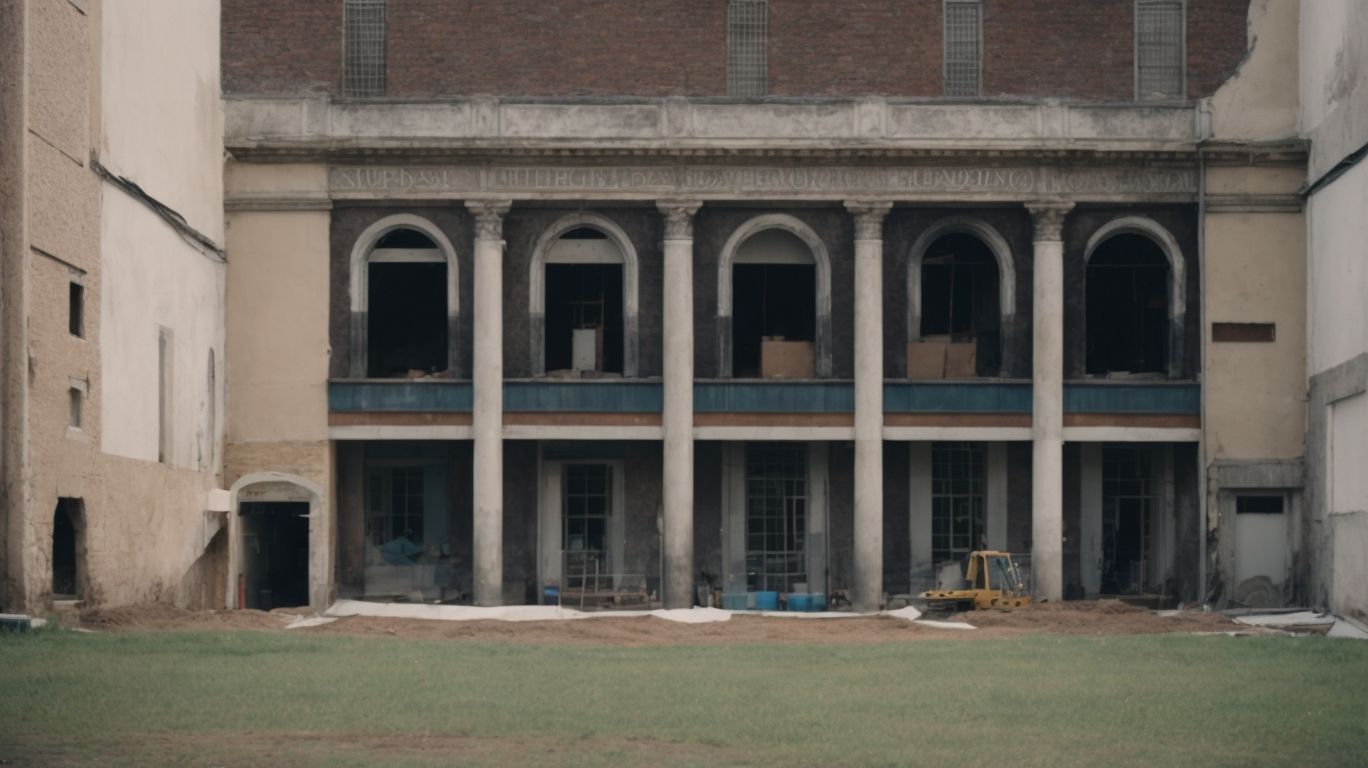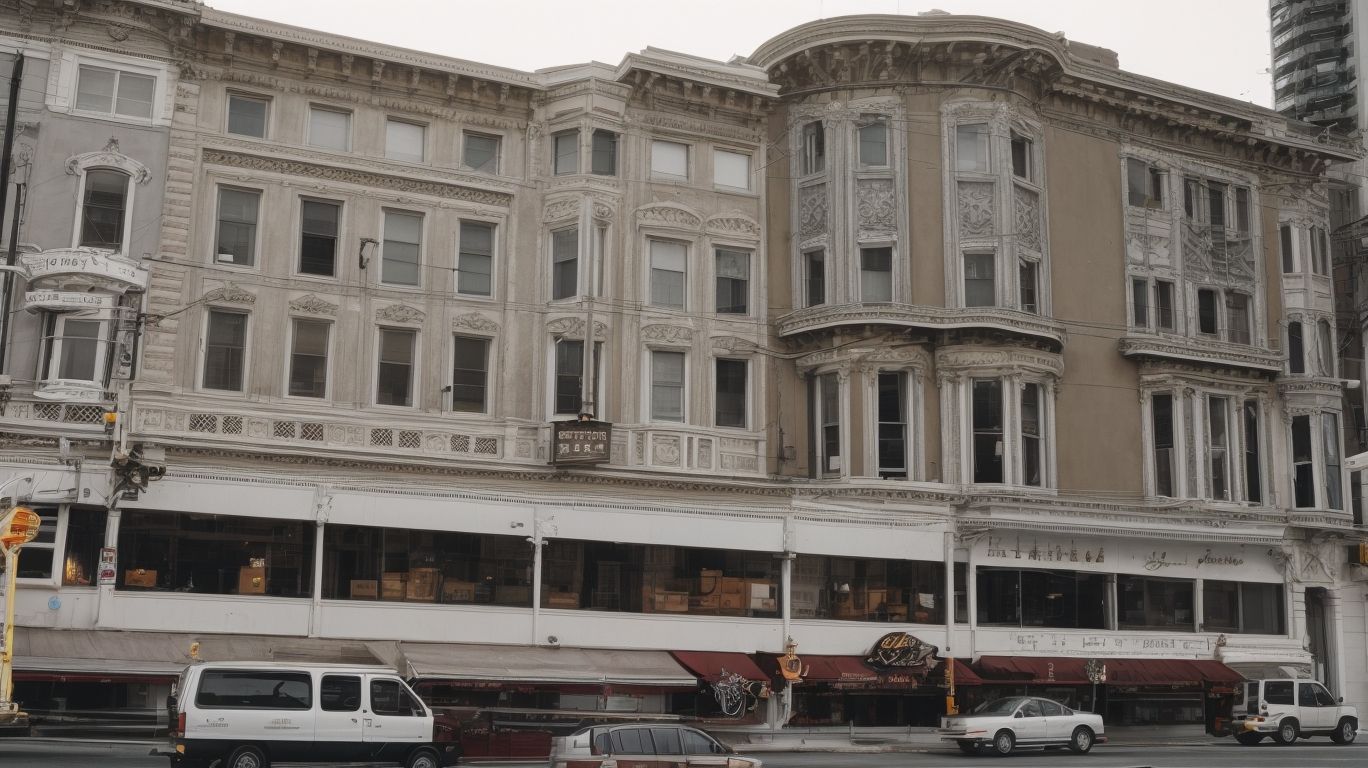
Demystifying Soft-Story Retrofit Costs: How to Budget for Your SF Project
Soft-story buildings are vulnerable to collapse during earthquakes due to their weak first floor, putting occupants at risk and causing extensive damage. Retrofitting these structures is crucial to enhance their safety and resilience.
But what are the costs involved in such a project, and how can you budget for it effectively? In this article, we will explore the engineering, design, permit, and construction costs associated with soft-story retrofitting, as well as additional expenses to consider. We will also discuss the benefits of this investment, including increased safety, improved property value, potential insurance savings, and compliance with local laws and regulations.
Whether you’re a property owner or a tenant, understanding the financial aspects of soft-story retrofitting is essential for making informed decisions and ensuring the long-term safety of your building.
What Is a Soft-Story Building?
A Soft-Story Building is a multi-story structure with a relatively weaker or open first floor, typically designed for parking, creating a soft, or weak, story that is susceptible to collapse during seismic events.
This structural configuration poses significant challenges for seismic resilience. The lack of solid reinforcement on the ground floor makes these buildings more prone to damage, jeopardizing the overall structural integrity. The heavy load from the upper floors can exacerbate the vulnerability of the soft story during an earthquake.
Building codes have been revised to address these issues, emphasizing the use of specialized construction materials and reinforcement techniques. Seismic risk assessment plays a crucial role in identifying and retrofitting soft-story buildings to enhance their resilience to seismic events.
Why Do Soft-Story Buildings Need Retrofitting?
Soft-Story Buildings require retrofitting to enhance their structural integrity, mitigate seismic hazards, and ensure building safety in the event of earthquakes.
This process is crucial for strengthening the first few floors of these buildings. These floors are particularly susceptible to damage during seismic events due to their open floor plans and weak support systems.
Retrofitting helps to minimize the risk of collapse, protect occupants, and prevent substantial property damage. By reinforcing these structures, the community can significantly decrease the impact of earthquakes, safeguarding lives and assets. Ultimately, retrofitting soft-story buildings aligns with a proactive approach to disaster preparedness and contributes to the overall resilience of urban infrastructure.
What Are the Costs of Soft-Story Retrofitting?
The costs of soft-story retrofitting encompass various elements such as construction expenses, seismic upgrades, and the implementation of seismic strengthening measures to address structural vulnerabilities.
Construction expenses are a significant component of the overall cost, including labor, materials, permits, and engineering fees.
Seismic upgrades involve the reinforcement of the building’s structure, such as foundation improvements, strengthening columns, and adding lateral support systems. Retrofit options like steel moment frames, reinforced concrete walls, and shear walls are available to enhance the building’s seismic performance, each with its associated costs and benefits.
Engineering and Design Costs
Engineering and design costs for soft-story retrofitting involve comprehensive assessments, cost estimations, and the planning of structural modifications using advanced seismic retrofit techniques.
During the analysis phase, engineers conduct in-depth evaluations to assess the vulnerability of soft-story buildings to seismic forces. This involves thorough examination of the existing structure, considering factors such as material integrity, load-bearing capacity, and potential weak points.
Cost estimation comes into play as the engineers evaluate the scope of work required and the materials and labor needed for the retrofitting process. The application of seismic retrofit techniques then follows, integrating innovative methods such as adding shear walls, strengthened foundations, and bracing systems to enhance the building’s resilience to seismic events.
Permit Fees
Permit fees for soft-story retrofitting encompass expenses related to building codes compliance, obtaining construction permits, and ensuring adherence to construction regulations to assess project feasibility.
These fees are crucial for maintaining safety standards and structural integrity within buildings, especially in high-seismic areas prone to potential earthquake damage.
The process involves comprehensive evaluations and assessments to confirm that the retrofitting work meets the required structural criteria, aligns with zoning ordinances, and follows the guidelines set by regulatory authorities.
Understanding the breakdown of permit fees allows property owners and developers to plan and budget efficiently for the necessary structural upgrades, ultimately contributing to the overall safety and stability of the building.
Construction Costs
Construction costs for soft-story retrofitting involve expenses related to foundation reinforcement, meticulous construction planning, and effective budgeting and management of construction expenses.
The foundation reinforcement is a crucial aspect of the construction costs. It involves strengthening the existing foundation to support the added structural load. Meticulous construction planning is essential to ensure that the retrofitting process is executed efficiently and in compliance with building codes and regulations.
Effective budgeting and management of construction expenses encompass the allocation of funds for materials, labor, permits, and other necessary resources. It also accounts for any unexpected costs that may arise during the retrofitting process.
Additional Costs
Additional costs associated with soft-story retrofitting may include expenses for retrofit financing, conducting seismic risk assessments, analyzing construction budgets, and optimizing retrofit budgets to ensure cost-effective solutions.
Supplementary costs are a crucial aspect of the retrofit process. Careful consideration is necessary for securing the funds needed for the project, which often involves loan applications or seeking external funding sources.
Seismic risk assessments are essential for evaluating structural vulnerabilities and informing decision-making during the retrofitting process. Additionally, construction budget analysis is vital in determining the financial feasibility of the project. Retrofit budget optimization focuses on finding efficient ways to minimize expenses without compromising safety and structural integrity.
How to Budget for Your Soft-Story Retrofit Project?
Budgeting for your soft-story retrofit project involves engaging qualified contractors, establishing a realistic construction timeline, and optimizing the construction budget based on project feasibility and requirements.
Careful consideration should be given to selecting experienced contractors who specialize in soft-story retrofit projects. Evaluate their track record, credentials, and reputation for delivering high-quality work within budget and on schedule.
Defining a construction timeline involves coordinating with the chosen contractors, understanding the scope of work, and factoring in potential challenges such as weather conditions or regulatory approvals. Efficiently optimizing the construction budget requires thorough cost analysis, material selection, and exploring potential cost-saving solutions without compromising structural integrity.
Get Multiple Bids
Obtain multiple bids for your soft-story retrofit project to compare construction contracts, analyze the cost breakdown, and exercise effective control over construction expenses to ensure cost efficiency.
This process is crucial for obtaining the best possible deal for your retrofit project. By soliciting bids from multiple contractors, you can gain insights into the various construction contracts available and assess their terms, timelines, and costs.
Once you have received the bids, conducting a rigorous cost breakdown analysis allows you to compare the specifics of each proposal, such as labor, materials, and overhead expenses. This careful scrutiny empowers you to make informed decisions and negotiate with contractors to ensure optimal cost control throughout the construction process.
Consider Financing Options
Explore various financing options for your soft-story retrofit project. This includes assessing the feasibility of retrofitting and strategically planning the construction budget to ensure successful implementation of retrofit options.
When considering retrofitting a building, it’s crucial to understand the feasibility and associated costs. This involves evaluating the structural integrity of the building and estimating the necessary upgrades. To secure funding, it’s important to explore options such as traditional loans, government assistance programs, or partnerships with private investors. Careful budget planning and cost estimation are key to a successful retrofit project.
Plan for Potential Delays and Extra Costs
When embarking on a soft-story retrofit project, it’s important to have contingency plans in place for potential delays and unforeseen costs. This includes aligning with construction requirements and implementing robust methods for monitoring construction costs.
To ensure the safety and stability of the building, a thorough evaluation of its structural integrity should be conducted, along with any necessary upgrades to comply with seismic retrofit standards.
Clear communication channels should be established with the construction team to stay informed about the progress and address any issues promptly.
It’s also crucial to closely monitor the budget to effectively manage any unexpected expenses and prevent them from derailing the project.
Flexibility and adaptability are key when navigating the complexities of a soft-story retrofit. With diligent planning and careful execution, a successful and cost-effective outcome can be achieved.
Factor in Long-Term Savings
Consider the potential long-term savings associated with your soft-story retrofit project. Implementing effective project management strategies and forecasting construction costs can optimize retrofit project budgeting.
By factoring in long-term savings, you can ensure the durability and structural integrity of the building, thus reducing the risk of damage in the future.
Implementing thorough project management ensures that timelines are adhered to and potential delays are minimized, ultimately impacting the overall cost-effectiveness of the project.
Forecasting construction costs accurately allows for better budget allocation and contingency planning, enabling you to navigate unexpected expenses and maintain financial stability throughout the retrofit process.
What Are the Benefits of Soft-Story Retrofitting?
Soft-Story Retrofitting offers benefits such as enhanced building resilience, adherence to seismic retrofit guidelines, and the allocation of construction budgets for sustainable improvements.
This approach not only ensures that buildings can withstand seismic events but also enhances their overall structural integrity.
By strategically allocating construction budgets towards retrofitting, property owners can avoid costly damages and potential downtime in the event of an earthquake.
Compliance with seismic retrofit guidelines also enables buildings to meet regulatory standards, contributing to the safety and security of occupants.
This proactive measure not only protects the building but also supports community resilience and disaster preparedness as a whole.
Increased Safety
Soft-Story Retrofitting ensures increased safety through meticulous seismic retrofitting evaluations, strategic allocation of construction costs, and effective management of retrofit budgets for sustainable safety enhancements.
This approach significantly reduces the vulnerability of buildings to seismic events, ensuring that they can withstand the impact and protect occupants.
By conducting thorough evaluations, potential weak points in the structure are identified, allowing for targeted improvements. Strategic allocation of construction costs ensures that the retrofitting process is carried out in a cost-effective manner, optimizing safety while managing budget constraints.
Effective budget management allows for the implementation of necessary safety enhancements without compromising on quality or compliance with building standards.
Improved Property Value
Soft-Story Retrofitting contributes to improved property value by conducting comprehensive structural assessments, analyzing construction budgets, and tracking construction costs to ensure tangible property enhancements.
This process not only enhances the structural integrity of the building but also provides reassurance to potential buyers or tenants.
The thorough assessment and retrofitting work demonstrate proactive maintenance and a commitment to safety, which can attract more discerning occupants and increase the overall property desirability.
The careful budget analysis and cost tracking ensure that the investment in the retrofitting project aligns with the potential increase in property value, creating a favorable return on investment for property owners.
Potential Insurance Savings
Soft-Story Retrofitting offers potential insurance savings through effective project cost management, optimization of construction costs, and strategic retrofit budget optimization to yield insurance-related financial benefits.
This approach not only helps in minimizing insurance premiums but also mitigates the risk of potential financial losses due to structural damage.
By addressing vulnerable soft-story buildings, property owners can demonstrate proactive risk management to insurance providers, potentially leading to reduced premiums.
Optimizing construction costs through retrofitting can increase the property’s resilience, positively impacting its insurability and overall risk profile.
It’s clear that soft-story retrofitting offers a comprehensive approach to insurance-related advantages, creating a win-win scenario for property owners and insurers alike.
Compliance with Local Laws and Regulations
Soft-Story Retrofitting ensures compliance with local laws and regulations by prioritizing construction budgeting, adhering to construction regulations, and planning seismic retrofit budgets in accordance with regulatory requirements.
This approach not only adds value to the property but also mitigates the risk of damage during seismic events.
By incorporating relevant seismic retrofitting techniques, property owners can streamline the permitting process and ensure that the construction meets the necessary criteria.
Aligning the seismic retrofit budget with local laws and regulations demonstrates a proactive approach towards community safety and sustainability, garnering positive attention from authorities and potential tenants or buyers.




No Comments